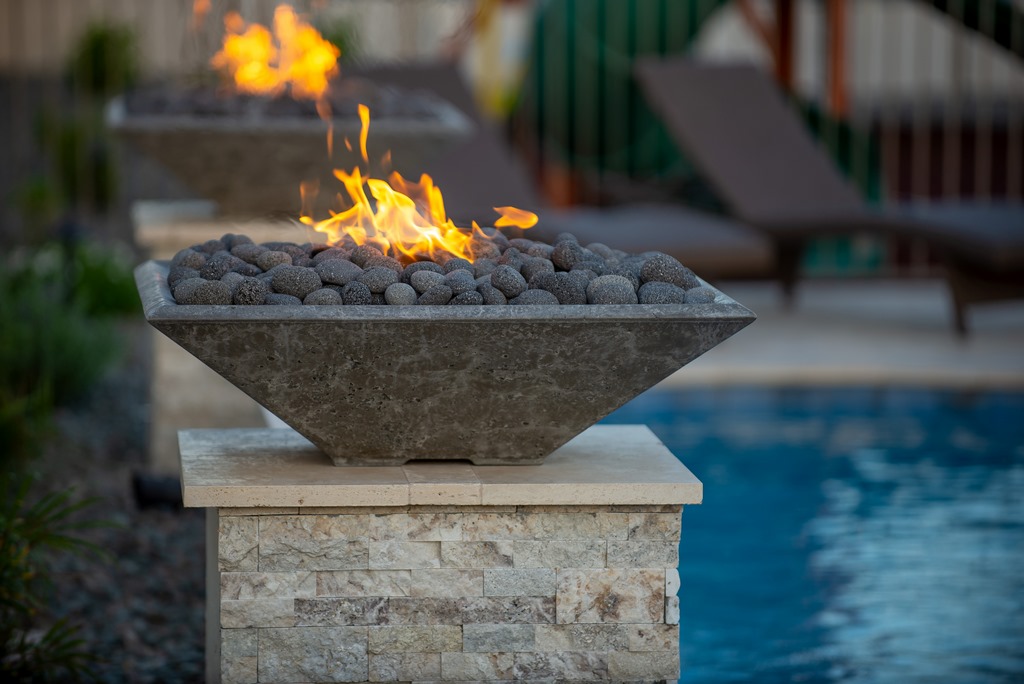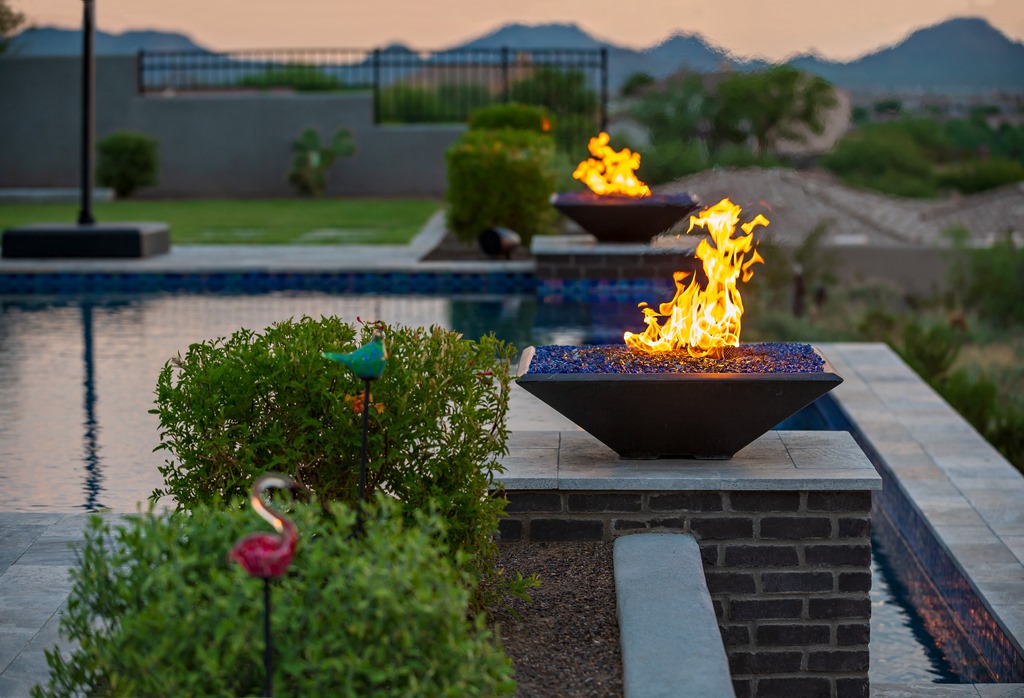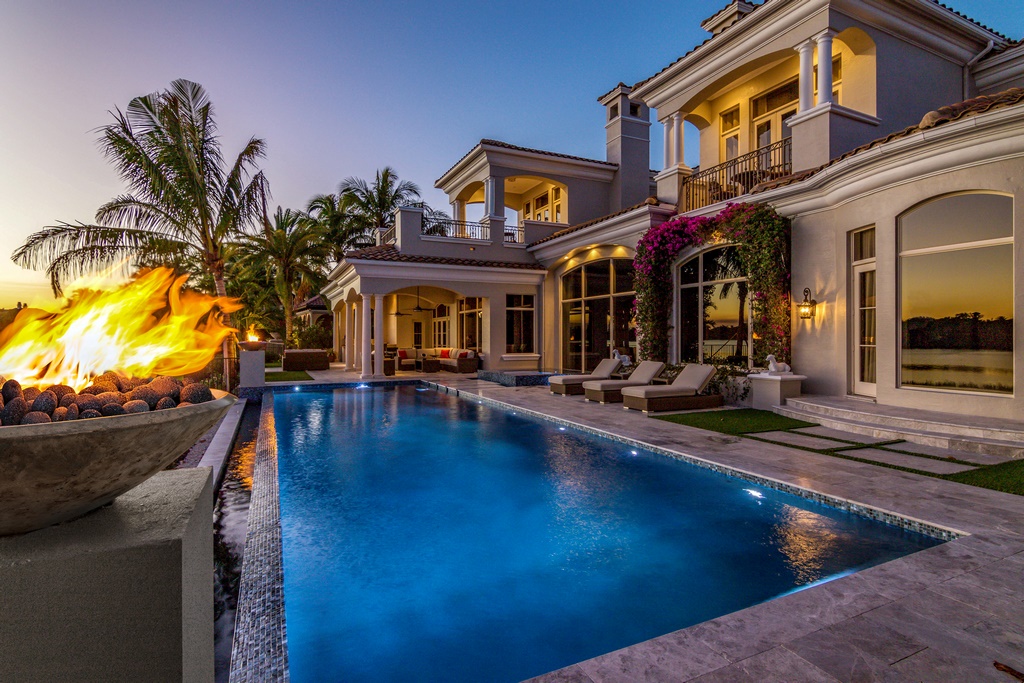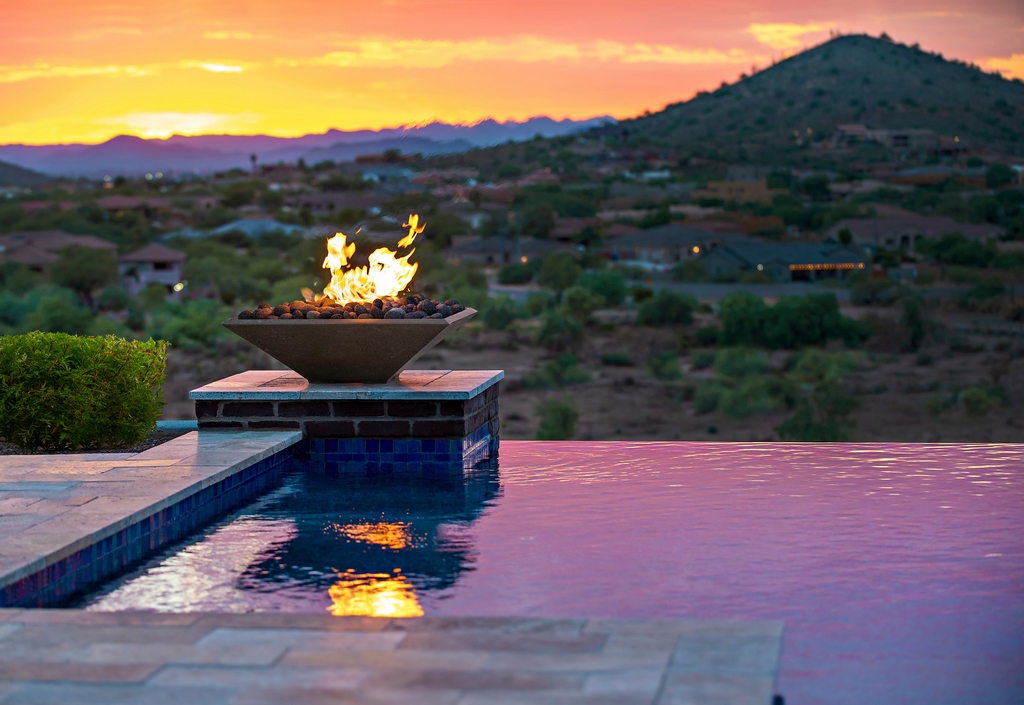Fire Feature Function & Safety


Fire has been integral to the outdoor experience all along. In backyard environments, the market has seen expansion over the past several years, both in terms of number of fire features sold, and the creative designs of those features. Using today’s beautiful fire elements safely and effectively means following well-established guidelines.
By Scott Richardson and Matt Sharp
For all of the diverse design options available in today’s fire features, they all have some things in common – namely the need to observe basic operation and safety measures.
The vast majority of products on the market, certainly those sold by our company, Pebble Technology International (Scottsdale, AZ) and most other manufacturers, are extremely safe. They have been thoroughly tested through safety standards-setting organizations such as the Canadian Standards Association (CSA), Underwriters Laboratories (UL) and others. Many of the safety standards are then adopted and recognized by local and regional governmental regulatory agencies.
CSA is the big player on this front, as they compare products to all available industry standards from ANSI, NEC, NFPA, etc. Gaining CSA’s seal of approval is not easy or inexpensive. It’s an extensive process that involves testing the safety of these products in all types of conditions, particularly rain and wind.
At this point, it’s fair to say that after decades of development and regulatory oversight, fire features are very safe products by design. While the operation and safety of fire features has been optimized by manufacturers and regulatory organizations, mistakes still can and do happen. One cannot overstate the importance of following published guidelines.
Depending on where and how a feature is installed, and especially by whom, you can unwittingly create a hazard in the form of a gas leak or other potential problems. That’s why it is of the utmost importance to have the installation performed by licensed professionals for each trade which is integral to a fire feature installation such as electricians, plumbers and /or gas line professionals. It’s just that simple.
We do see problems with some installations, but they are relatively few and far between. Most of the problems we’ve seen involve lack of pre-planning with items such as gas line positioning and electrical conduit locations. Problems also arise by simply not following basic installation instructions per our installation manual.
With so many different trades involved in the construction of a backyard or pool environment by the time the final connections to a fire feature are made, the trades that installed the gas line and wired the electrical are usually long gone. Therefore, the importance of constant project management and oversight cannot be overstated to ensure that the work prior to final connection is correct.
THE GAS SUPPLY
A proper fire feature installation begins with the gas line. The gas piping or delivery system has to be sized correctly to accommodate the Btu demand of the feature.
The challenge is that the fire feature is often not the only appliance that runs on gas. The project may have a gas pool or spa heater, gas stove or barbecue as part of an outdoor kitchen and/or multiple fire elements throughout the landscape, all of which should be considered and calculated as part of the total Btu demand for the overall project.
When you add it all up, you might be looking at over 1,000,000 aggregate Btu, or more. Under-sizing your gas piping will lead to incomplete combustion of one or more elements and possibly cause one or more elements to not function at all. In some states, building inspectors or permit departments will often identify that problem; but, in jurisdictions with lax regulatory oversight the buck stops with the contractor’s knowledge and project oversight to ensure a satisfactory installation.
We have heard of instances in which improper gas line sizing was not caught early in the project and the entire meter and/or line sizing had to be recalculated and reinstalled. It goes without saying that demoing decking and digging up landscaping in order to upsize gas lines is labor intensive and expensive, and is easily avoidable when proper Btu demand calculations are completed prior to commencing the project.
Our auto-burners are designed so that the system absolutely knows if there is adequate gas volume being supplied to the burner. This is accomplished by reading the water column in inches of pressure — typically 7 inches for natural gas and 11 for propane. If the pressure is out of range, the burner will shut down and attempt to relight three times. If the burner is unable to successfully re-light, the system goes into lockout, meaning the burner or system in question simply won’t function.
Other manufacturers’ safety circuits and lockout protocols function differently. In some systems, low gas pressure won’t result in a shut down, but the gas won’t burn cleanly and can result in soot build-up. Soot build-up on an open burner element is generally not a safety issue per se, but it can become a maintenance and aesthetic concern over time. On certain gas appliances such as some pool heaters, soot build-up can be a safety issue.
The point is, no matter whose system you’re installing, it is necessary to account for all of the BTU demand when planning the gas installation.
PROXIMITY AND LOCATION
Where a fire feature is physically located, and how it fits in with the overall traffic patterns and viewing space, is another extremely important issue, from a safety standpoint and aesthetically.
We follow the CSA guidelines and, in our manual, also urge contractors to follow all local codes. CSA requires four feet of clearance on all sides and six feet overhead for anything combustible. This standard applies to structures, seating areas, pathways, deck areas and anywhere you choose to place a fire feature.
The good news is that professional architects, landscape architects and watershape designers and contractors are well-aware of these code requirements. Common sense dictates that fire can be hazardous and no one wants to be exposed to the liability that comes with an improperly installed or placed feature.
With that said, we have seen improper installations that have caused liable situations, or have the potential to to do so. Keep in mind the potential for newly planted vegetation to mature and encroach on the clearance requirements of a newly installed fire feature.
Here are a number of commonsense measures that are part of most recommended guidelines:
[] Ensure flammable materials are kept beyond the recommended clearances, whether it’s landscape debris, wooden furniture, or flammable chemicals such as cleaning supplies or pool chemicals.Simply, be sure fire features are located in places where they will be free of flammable materials.
[] Avoid placing fire features beneath over hanging foliage, which can drop leaves and branches into the flames. [] Avoid locating fire features proximate to traffic patterns or in places adjacent to children’s play areas. [] Install all gas, electrical and, when applicable, water lines, underground. [] Leak test all above ground gas line connections. [] Have an approved fire extinguisher nearby, just in case the flame somehow escapes the feature. [] Never put anything in a fire feature vessel that is not recommended by the manufacturer. We make specific recommendations for glass and lava rock media used in our fire bowls & pits. [] Cover features during extreme cold and/or wet weather, be it snow or heavy rainstorms. .Other issues including protection of gas and electrical lines in deck penetrations, correct fire-bowl ventilation, shut-off switches, and other topics, are covered extensively in our installation manual, and in information provided by other manufacturers.
We recommend leaving homeowners with a copy of the installation manual for their future reference.
As cliché as it might sound, the key to fire function and safety is to scrupulously follow instructions. For the most part, problems occur when someone in the process deviates from readily available guidelines.
When you do follow instructions, plan ahead, and coordinate with all the involved trades, fire features will function properly and safely and will provide homeowners will years of comfort and enjoyment.
Scott Richardson is a fire and water warranty manager for Pebble Technology in Scottsdale, AZ. Matt Sharp is a territory sales manager for the company.













